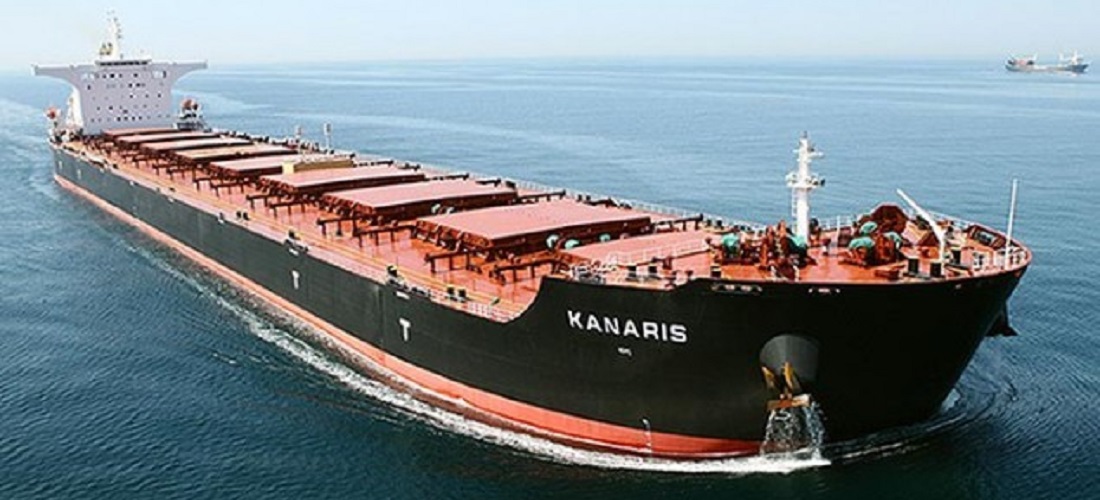
Capesize “mega-vessels” may represent the way out for soy producers
Dec, 27, 2021 Posted by Gabriel MalheirosWeek 202149
The pressure to reduce the emissions of greenhouse gases derived from maritime transportation may accelerate one of the main demands of Brazilian agribusiness, especially soy producers, which has been under discussion for the past six years. The alternative is the replacement of the ships currently used for grain exportation, which have a capacity of up to 85 thousand tons, by larger vessels, with a capacity of either 200 thousand or 220 thousand tons.
Capesize vessels are employed in various international transportation routes. In the case of soy products, shipments through capezise vessels would reduce CO2 emissions by 31%, as well as logistical costs by 12.5% compared to the types of ships most currently used in Brazil, the Panamax ships, according to a study conducted by the research institution “Escola Superior de Agricultura de Luiz de Queiroz” (Esalq – Log).
The study takes into account the costs of transporting soybeans from Centre-West farms, the region where most of the Brazilian soy is grown, to China, the main importer of the product from Brazil. The problem lies in the fact that, in Brazil, larger vessels cannot dock in commercial ports as they are not deep enough, thus, creating stranding risks.
The most relevant bottleneck in terms of implementing the measure is logistics, says Thiago Péra, coordinator at Esalq’s Center for Research and Extension in Agribusiness Logistics.
To accommodate this type of ship, ports need a depth above 14 meters. “Some traditional ports can even berth Capesize ships when they are not entirely loaded to avoid stranding, even though they are not able to generate economies of scale by doing so”, explains Péra.
Green corridors
Maritime transport accounts for around 3% of the global emission rates of polluting gases into the atmosphere and, although it may seem like it, “this is not little mark”, emphasizes Tiago Buss, from EC Consultoria, which operates in the areas of transport and logistics. According to him, in addition to new ports in deeper places, the country needs logistical corridors that integrate road, rail, and maritime transportation modals
As the largest exporter of agricultural products in the world, the International Maritime Organization (IMO) is beginning to pressure Brazil. The organization established, during Cop 26, a global goal of reducing the emission of pollutants by at least 50% until 2050.
“We have been discussing with the with the Brazilian Navy – the country’s representative at the IMO – the issue of using larger ships for six years or so as it would increase Brazilian competitiveness by reducing costs, in addition to the easing environmental issue,” says Fábio Meirelles, president of the Minas Gerais Soy and Corn Producers Association (Aprosoja-MG). When transporting more, the freight cost per ton drops by approximately 40%.
Meirelles believes the country should have already started working on implementing this alternative, as other countries have already done, so as to not lose competitiveness. “Maybe now, with strong environmental pressure, this transformation will take place, as we are very far from having the port system that other countries do.”
Alternative fuel
The simulations ran by Esalq-Log show that 74.1% of the CO2 released in soy’s path from the Centre-West region in Brazil to China are maritime emissions, while 21.7% are road-bound (as grains are transported to ports by trucks), 3.7% come from railroad transportations and 0.5 come from waterway transportation (especially when cabotage shipping is employed).
Taking into account that maritime transportation usually happens in Panamax ships, CO2 emissions can reach 130 kilos. If the trip were made by a Capesize vessel, emissions nearer 89 kilos, that is, 31.5% less. In addition to being larger, this type of vessel uses more modern technologies and alternative resources that help control emissions.
In terms of general costs, the transportation of one ton costs US$ 63 in smaller ships, while it takes US$ 55 to transport one ton in the larger ones, a difference of 12.5%. The most expensive modals employed are, in descending order, road transportation (56%), maritime (31.7%), railway (11.4%), and waterway (0.9%).
To further decrease costs it is important to invest in railways, expanding the current rail network and adapting it to the international standard, which would also lead to a significant reduction in pollutant emissions, says Buss.
The consultant points out that, according to recent projections made by the Ministry of Agriculture, soy and corn exports may increase by 92 million tons by 2030. If Panamax ships are used, considering their capacity of 66,000 tons, 13,630 trips to China will be required. If Capesize vessels are employed instead, considering their capacity of 120 thousand tons, less than half of those trips would be required. “These are far fewer ships going back and forth.”
Source: O Estado de S. Paulo
To read the full original article visit the link: https://economia.estadao.com.br/noticias/geral,supernavio-pode-ser-a-saida-para-a-soja,70003935626
-
Meat
Oct, 25, 2022
0
Argentina apt to export pork to Lebanon
-
Other Logistics
Feb, 07, 2020
0
Government forecasts R$30 billion in rail investments over next 5 years
-
News Features
Dec, 22, 2021
0
Maersk to buy LF Logistics for $3.6 billion
-
Ports and Terminals
Dec, 30, 2019
0
Açu Port continues to grow with first shipment of beach iron

